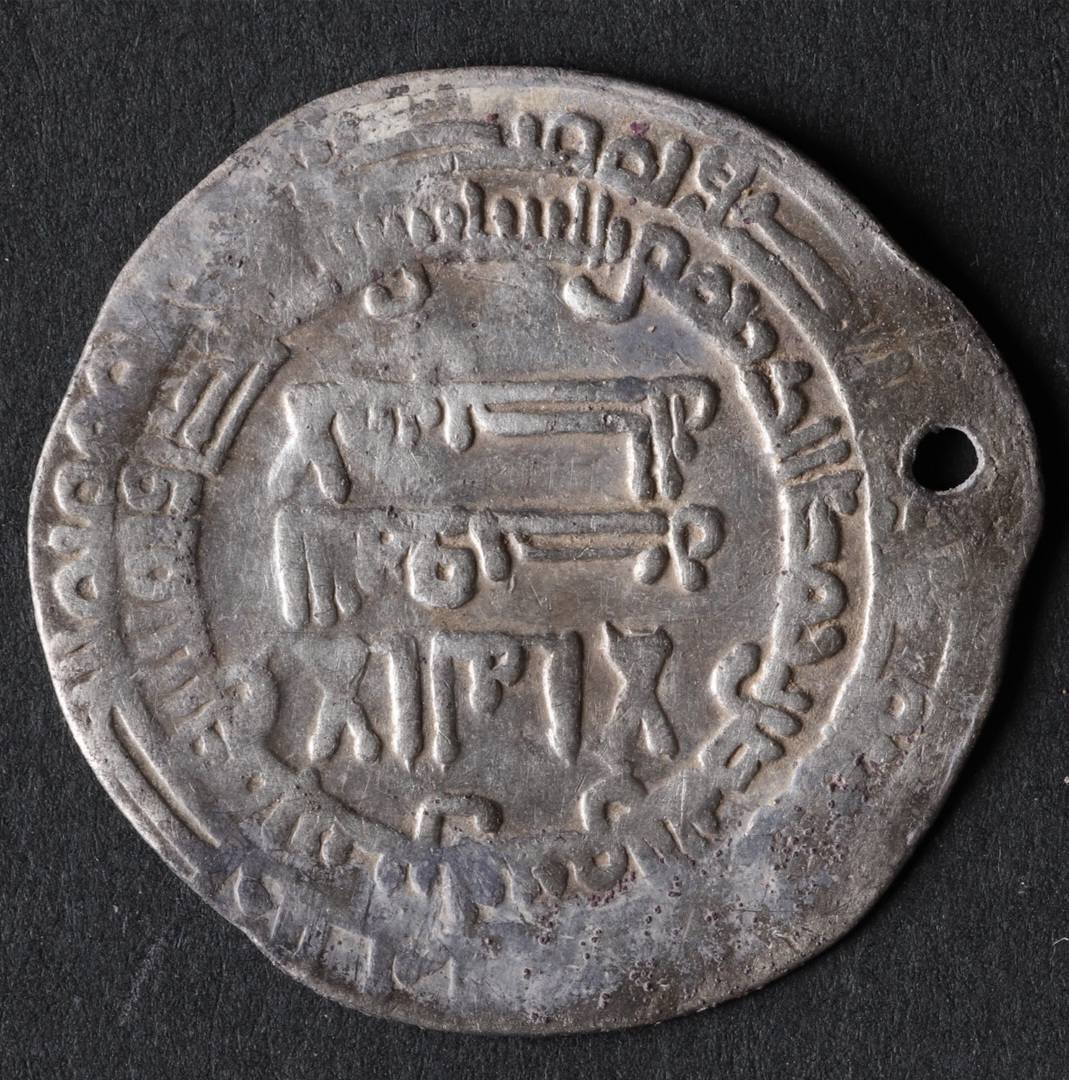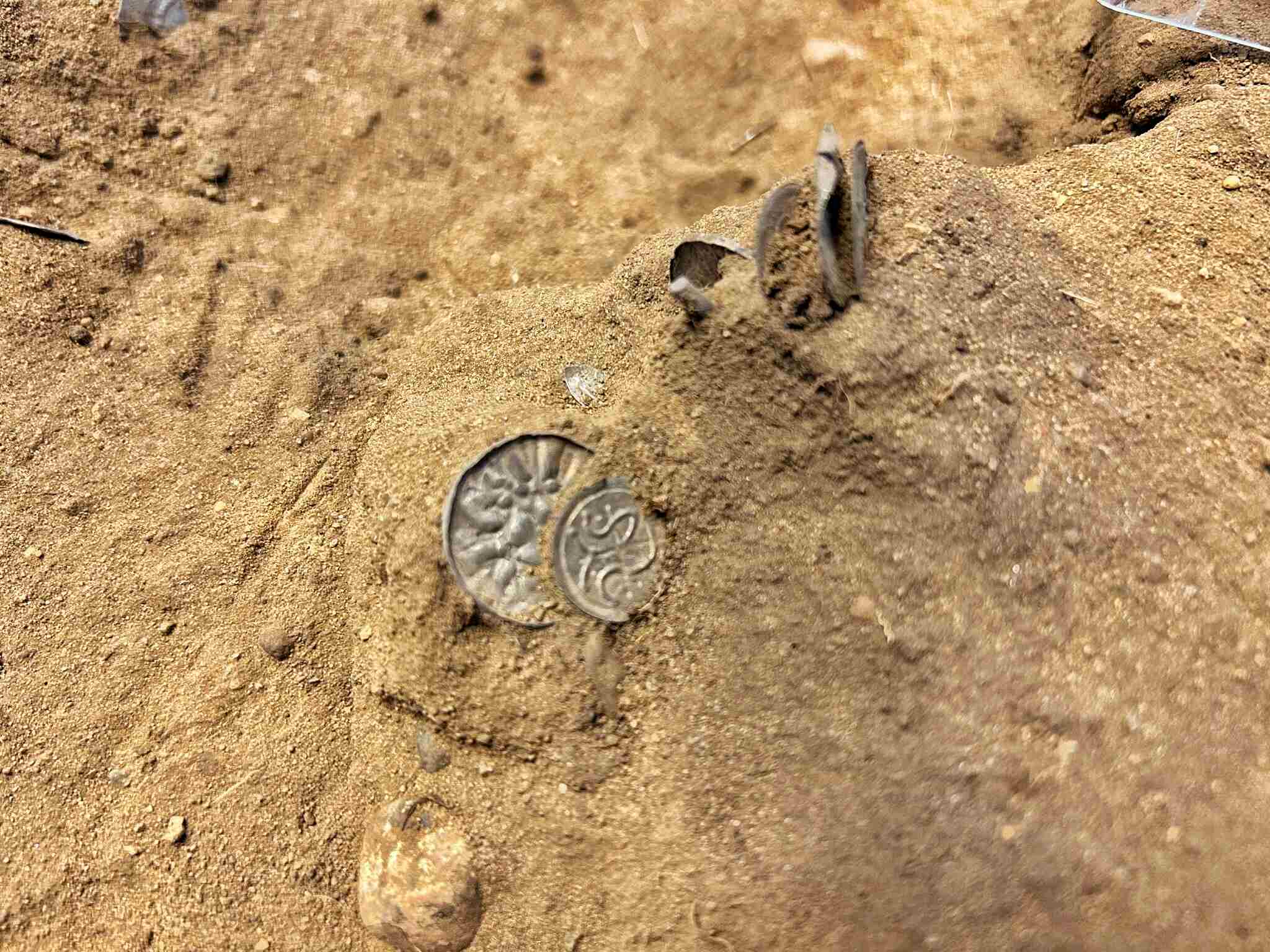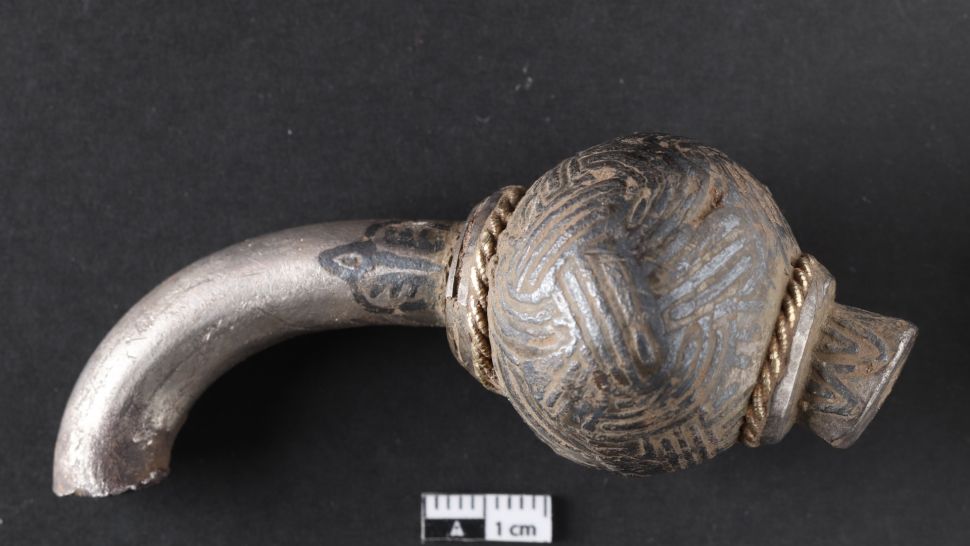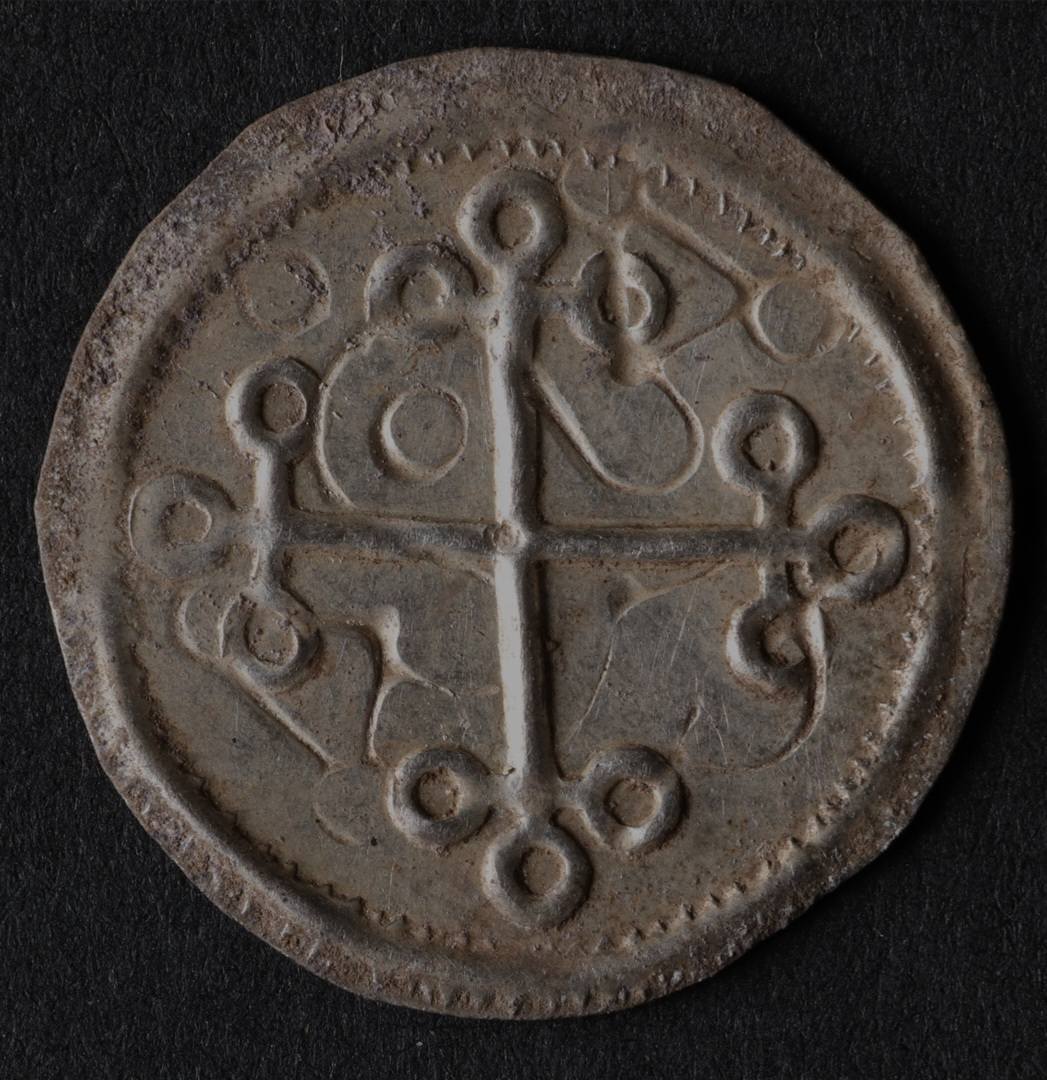The Vikings have long been an intriguing civilization, with many mysteries and legends surrounding their history. A team of archaeologists unearthed a double hoard of Viking treasure from a field near Harald Bluetooth’s fort in Denmark.

The treasure was discovered in a field near Harald Bluetooth’s fort, and it is believed to have belonged to the powerful Viking king. The silver coins and jewelry that were found are providing new insight into the reign and religious ambitions of Harald Bluetooth.
A local archaeological crew discovered the artifacts late year while surveying a farm located northeast of the town of Hobro and close to Fyrkat, a ring fort constructed by Harald Bluetooth in around A.D. 980. The objects consist of over 300 pieces of silver, including approximately 50 coins and cut-up jewelry.
According to the findings of the excavations, the valuables were first buried in two separate hoards around 100 feet (30 meters) apart, most likely beneath two structures that no longer exist. Since that time, these hoards have been dispersed around the land by various pieces of agricultural technology.
According to Torben Trier Christiansen, an archaeologist who was involved with the find and the curator of the Museums of North Jutland, it appears that whoever buried the treasure did so with the intention of purposefully dividing it up into many hoards in the event that one of the hoards was lost.

Although some news outlets have reported that the finder was a young girl, the first of the treasures was located by an adult woman with a metal detector.
Many of the items are considered to be “hack silver” or “hacksilber,” which refers to pieces of silver jewelry that have been hacked apart and sold by their individual weights. A couple of the coins, however, are made of silver, and archaeologists have deduced that they originated either in Arabic or Germanic nations, as well as in Denmark itself.

There are “cross coins” among the Danish coins, which were minted during the reign of Harald Bluetooth in the 970s and 980s. This excites archaeologists who study the coins. After converting from the paganism of his Norse heritage to Christianity, Harald made the propagation of his new faith an integral element of his strategy to bring peace to the feuding Viking clans who inhabited Denmark.
“Putting crosses on his coins was part of his strategy,” Trier said. “He paid the local aristocracy with these coins, to set a precedent during a transitional period when people cherished the old gods as well.”
Both hoards feature pieces of a very big silver brooch that was undoubtedly taken in a Viking raid. This brooch would have been worn by a king or nobility and would have been worth a lot of money. He said that because this particular form of brooch was not popular in the territories ruled by Harald Bluetooth, the original one had to be dismantled into various pieces of hack silver.
Trier noted that archaeologists would return to the site later this year in the hopes of gaining further knowledge about the buildings that stood there throughout the Viking Age (793 to 1066 AD).
Harald Bluetooth

Archaeologists aren’t sure why Harald gained the nickname “Bluetooth”; some historians suggest he may have had a prominent bad tooth, as the Norse word for “blue tooth” translates to “blue-black tooth.”
His legacy continues on in the form of the Bluetooth wireless networking standard, which tries to standardize the manner in which various devices communicate with one another.
Harald united Denmark and for a while was also king of part of Norway; he reigned until 985 or 986 when he died fending off a revolt headed by his son, Sweyn Forkbeard, who succeeded him as king of Denmark. Harald’s son Sweyn Forkbeard went on to become king of Denmark after his father’s death.
According to Jens Christian Moesgaard, a numismatist at Stockholm University who was not involved in the discovery, Danish coins seem to be from late in Harald Bluetooth’s reign; the dates of the foreign coins do not contradict this.
This new double hoard brings important new evidence that substantiates our interpretations of Harald’s coinage and power, according to Moesgaard. The coins were probably distributed at the king’s newly built fort at Fyrkat.
“It is indeed very likely that Harald used these coins as gifts for his men to ensure their loyalty,” he said. The crosses on the coins suggest Christianity was a key part of the king’s plan. “By the Christian iconography, Harald spread the message of the new religion at the same occasion,” said Moesgaard.
This discovery has revealed new insights into the reign and religious ambitions of one of the most powerful Viking kings.
The artifacts, which include silver coins and jewelry, will help historians better understand the culture and society of the Vikings. It’s exciting to think that there may still be many more treasures waiting to be unearthed, and we look forward to the discoveries that lie ahead.




